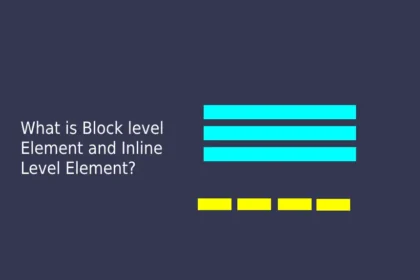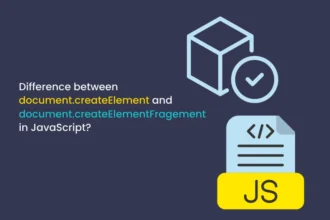JavaScript Interview
What is Arrow and Normal Function in JavaScript?
Arrow Function vs Normal Function in JavaScript In JavaScript, Arrow Functions and Normal Functions (also called Regular Functions) are two ways to define functions. They differ in syntax and behavior,…
Your Trusted Source for Accurate and Timely Updates!
Unlock the Pulse of the Present
Just for You
Lazy Loading in React.js: Boosting Performance and Reducing Load Time
In modern web development, performance plays a crucial role in user experience. One technique that…
Difference Between position: relative and position: absolute in CSS
Propertyposition: relativeposition: absoluteDefinitionThe element is positioned relative to its original position in the normal document…
What is Block level Element and Inline Level Element?
Block-level Elements Block-level elements occupy the entire width of their parent container (by default) and…
What is Position in CSS?
In CSS, the position property is used to specify how an element is positioned in…
Lasted JavaScript Interview
Is JavaScript a synchronous or asynchronous language?
JavaScript is primarily a synchronous, single-threaded language, but it also supports asynchronous programming through features like callbacks, promises, and async/await.…
Difference between document.createElement and document.createElementFragement in JavaScript?
Difference Between document.createElement() and document.createDocumentFragment() in JavaScript 1. document.createElement() This method creates a single HTML element. Syntax: javascriptCopyEditconst element =…
What is one-way data binding in React?
One-way data binding in React means that data flows in a single direction, from the component’s state or props down…
What are the Rest and Spread operators in JavaScript?
Rest and Spread Operators in JavaScript (...) The Rest Operator and Spread Operator both use three dots (...), but they…
What is memoization in JavaScript?
Memoization is an optimization technique used in JavaScript (and other programming languages) to speed up the execution of functions by…
What is Arrow and Normal Function in JavaScript?
Arrow Function vs Normal Function in JavaScript In JavaScript, Arrow Functions and Normal Functions (also called Regular Functions) are two…
What is the this Keyword in JavaScript?
The this keyword in JavaScript refers to the object that is executing the current function. Its value depends on how…
What is Scope in JavaScript?
Scope in JavaScript refers to the context in which variables are accessible. It determines which part of the code can…













